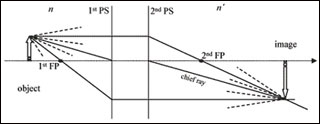Course Description
This course provides an introduction to optical science with elementary engineering applications. Topics covered in geometrical optics include: ray-tracing, aberrations, lens design, apertures and stops, radiometry and photometry. Topics covered in wave optics include: basic electrodynamics, polarization, interference, …
This course provides an introduction to optical science with elementary engineering applications. Topics covered in geometrical optics include: ray-tracing, aberrations, lens design, apertures and stops, radiometry and photometry. Topics covered in wave optics include: basic electrodynamics, polarization, interference, wave-guiding, Fresnel and Fraunhofer diffraction, image formation, resolution, space-bandwidth product. Analytical and numerical tools used in optical design are emphasized. Graduate students are required to complete assignments with stronger analytical content, and an advanced design project.
Course Info
Learning Resource Types
theaters
Lecture Videos
grading
Exams with Solutions
group_work
Projects with Examples
notes
Lecture Notes
assignment
Problem Sets
Problem Set Solutions

Imaging condition: ray-tracing. (Image by Prof. George Barbastathis.)










